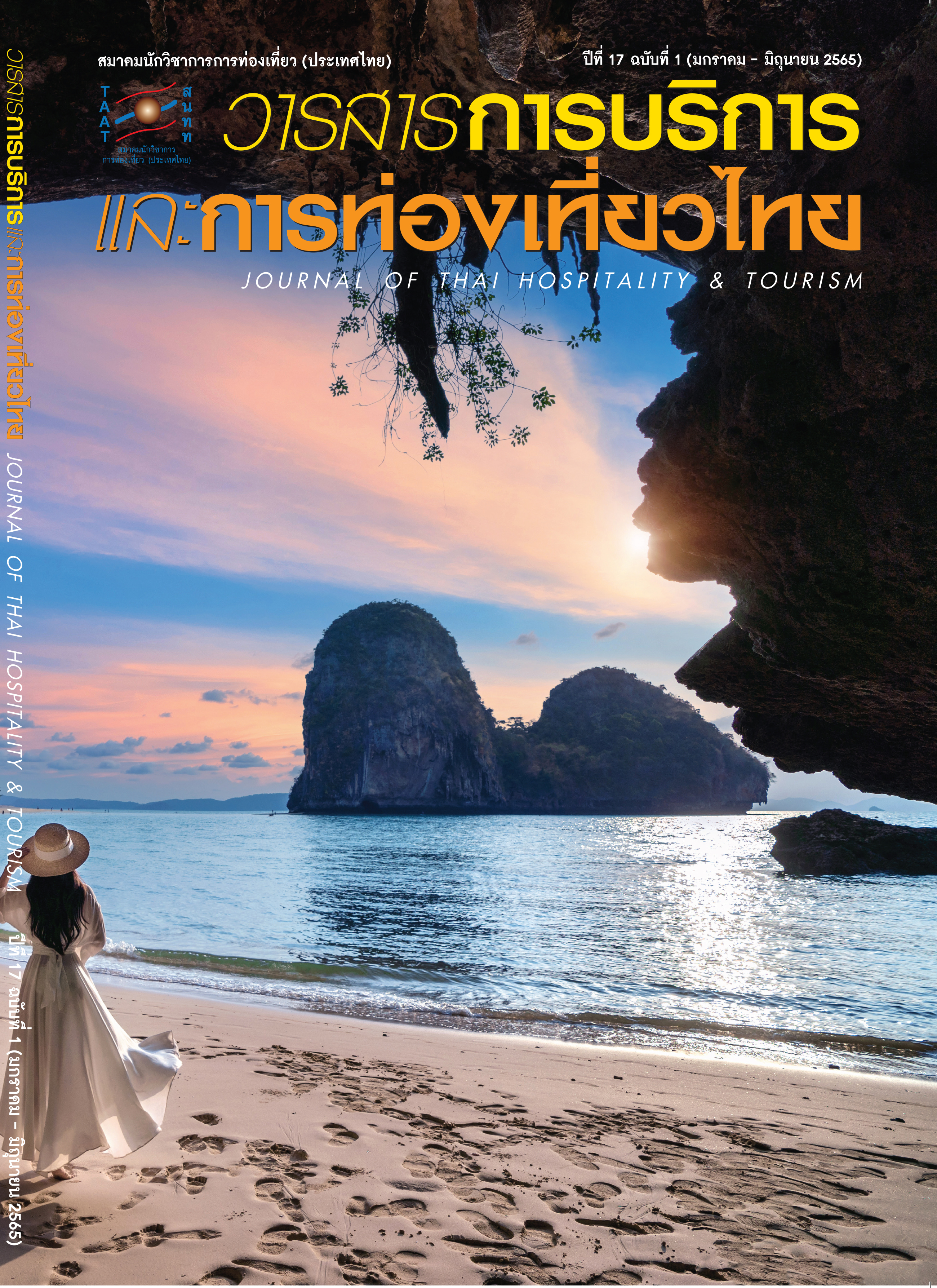การประเมินผลกระทบด้านเศรษฐกิจจากการท่องเที่ยวในพื้นที่พิเศษเพื่อการท่องเที่ยวอย่างยั่งยืน
Main Article Content
บทคัดย่อ
การส่งเสริมการพัฒนาพื้นที่ที่มีศักยภาพด้านการท่องเที่ยว เพื่อให้เกิดการจ้างงานและยกระดับคุณภาพชีวิตและความเป็นอยู่ของท้องถิ่นให้ดีขึ้น จึงมีความจำเป็นที่จะต้องดำเนินการศึกษาผลกระทบเชิงทวีคูณจากการท่องเที่ยว ด้วยการค้นหาคำตอบว่าการท่องเที่ยวสร้างมูลค่าทางเศรษฐกิจในพื้นที่เป็นจำนวนเท่าไร และมีผลกระทบในลักษณะใดต่อธุรกิจหรือประชาชน ตลอดจนสามารถกำหนดกลยุทธ์ที่ใช้ในการจัดการผลประโยชน์และรายได้อย่างมีประสิทธิภาพ โดยโครงการนี้มีวัตถุประสงค์ในการศึกษา 1) เพื่อประเมินรายได้จากการท่องเที่ยวในพื้นที่พิเศษของอพท. ทั้งรายได้ทางตรงและแบบทวีคูณของรายได้จากการท่องเที่ยว ซึ่งแสดงให้เห็นถึงรูปแบบของรายได้ การกระจายรายได้ การลงทุนและผู้รับผลประโยชน์ทั้งในและนอกพื้นที่พิเศษ เป็นต้น และ 2) เพื่อจัดทำข้อเสนอแนะในการพัฒนาเศรษฐกิจการจัดการผลประโยชน์ และการกระจายรายได้ จากการท่องเที่ยวในแต่ละพื้นที่พิเศษ
ผลการศึกษาพบว่า ผลกระทบเชิงเศรษฐกิจในการมีตัวตนอยู่ของ อพท. พบรายได้ทั้งทางตรงและทางอ้อม โดยประเมินรายได้ทางตรงไว้ที่ 6,253 ล้านบาท สำหรับผลกระทบเชิงทวีคูณจากการท่องเที่ยวเป็นจำนวนเงินทั้งสิ้น 1,569 ล้านบาท โดยพื้นที่เมืองพัทยาและพื้นที่เชื่อมโยง (อพท. 3) เป็นพื้นที่ที่น่าสนใจเพราะการเข้าไปตั้งของสำนักงานอพท. การส่งเสริมด้านต่าง ๆ ที่ได้นำเข้าในพื้นที่ก่อให้เกิดผลกระทบทางตรง 125,737 ล้านบาท ในส่วนผลกระทบของผลกระทบเชิงทวีคูณจากการท่องเที่ยวนั้น เป็นจำนวนทั้งสิ้น 52,700 ล้านบาทโดยประมาณ ถัดมาเป็นพื้นที่อุทยานประวัติศาสตร์สุโขทัย-ศรีสัชนาลัย-กำแพงเพชร (อพท.4) เกิดผลกระทบเชิงทวีคูณจากการท่องเที่ยวโดยประมาณ 800 ล้านบาท และจังหวัดเลย (อพท.5) ประมาณ 1,345 ล้านบาท ส่วนจังหวัดน่าน (อพท.6) เกิดผลกระทบทางตรงและผลกระทบเชิงทวีคูณจากการท่องเที่ยวโดยประมาณ 1,000 ล้านบาท สุดท้ายคือ เมืองโบราณอู่ทอง (อพท.7) เกิดผลกระทบทางตรงและผลกระทบเชิงทวีคูณจากการท่องเที่ยวเป็นจำนวนเงิน 40 และ 60 ล้านบาท ตามลำดับ หากประเมินค่าผลกระทบเชิงทวีคูณจากการท่องเที่ยวจะพบว่าการมีอยู่ของอพท. ผ่านนโยบายสำคัญก่อให้เกิดการกระจายรายได้และเกิดผู้รับผลประโยชน์มากกว่าในภาพรวม คิดเป็น 2.09 เทียบกับกรณีผู้ประกอบการที่ไม่อยู่ในภาคีเครือข่ายซึ่งมีผลกระทบเชิงทวีคูณจากการท่องเที่ยว 1.37
Article Details

อนุญาตภายใต้เงื่อนไข Creative Commons Attribution-NonCommercial-NoDerivatives 4.0 International License.
เอกสารอ้างอิง
Jurakanit, K. (2008). A Study of Factors Influencing Travelling Decision Making to Hatyai District, Songkhla Province of Thai Tourists. Faculty of Sciences, Chulalongkorn University.
Klai-um, U. (2010). Impact of Tourism Industry Related on Production Branches of Bangkok: Analyzed Using Factors of Production - Production Table. Bangkok: N.P.
Kongkeaw, P. (2011). Distribution of Economic Benefits from Tourism in Thongnian Community, Khanom District, Nakhon Si Thammarat Province. Faculty of Arts, Walailuk University.
Ministry of Tourism and Sports. (2011). National Tourism Development Plan 2012–2016. Retrieved from https://www.mots.go.th/ewt_dl_link.php?nid=6351.
Pholphirul, P. (2007). The Multiplier of Tourism. Retrieved from http://www.cbt-i.org/?Ge=show_pages&gen_lang=20112012094103#.VqyRqqMYhEt.
Ritta, S. (2013). Guideline for Creative Tourism Products Development of Phayao Leak West Rim Community. Faculty of Arts, University of Phayao.
Sangsnit, N. (2011). DASTA Invites Creative Travel For sustainable tourism. Retrieved from https://mgronline.com/travel/detail/9540000068022
Watthanakunjarat, A. (2013). Survey of National Accounts on Tourism for Thailand in 2013. National Institute of Development Administration, Bangkok.


